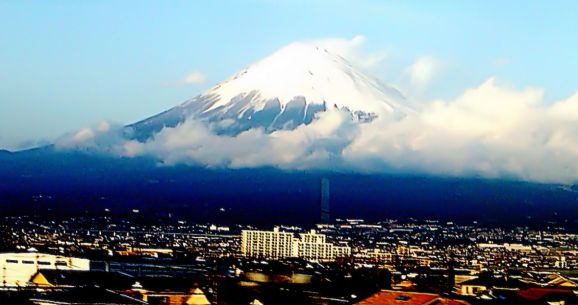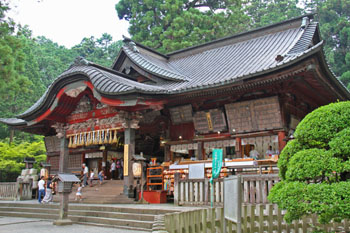Fuji is going to feature big in 2013. In June a Unesco committee will decide if the Japanese iconic mountain should be registered as a World Heritage site, and the decision is sure to hit the world news. Below is a truncated Japan Times article that looks at the spiritual symbol from a number of angles. For the full article, click here.

Mount Fuji from a shinkansen train south of Tokyo (Photo by Kamasami Kong
Reflecting the great affection in which it is held, Japan’s most beautiful mountain is also its most climbed. However, the beauty in the beholder’s eye definitely improves with distance. Up close, the 3,776-meter mountain presents a different aspect. Anyone who has ever clambered up it during the official two-month climbing season from July 1 — along with reportedly more than 200,000 trekkers a year — knows that ascending the thing is like a never-ending slog up an uninspiring, though wildly popular, slag heap.
The most picturesque way of appreciating the mountain’s physical form is to do so from Fuji’s Five Lakes — known in Japanese as Fuji Go-ko. Mount Fuji is classified as an active volcano, though it has been dormant since its last eruptive outburst in 1707-08, when the spewed-out ash reaching Edo (present-day Tokyo) was so thick as to prevent daytime reading. Before then, it was anything but dormant, and lava flows from the volcano dammed up rivers, giving rise to the five lakes at its northern base. As three of these lakes are still linked by systems of underground channels, their water surfaces are at the same altitude.
—-

Grand main hall of Kitaguchi Hongu Fuji Sengen Shrine (Japan Times)
If scrambling around lava caves is the most hands-on fun in the Five Lakes area, the most serene spot is found in the shape of Kitaguchi Hongu Fuji Sengen Shrine. This ancient Shinto jinja is the traditional starting point for pilgrims ascending the peak and, befitting the great spiritual endeavor, the grand construction is mystically impressive with its huge overarching torii and stately avenue flanked by mossy stone lanterns and majestic cryptomerias leading up toward one of today’s several summit routes.
These days, few who make it to the top of Mount Fuji are actual pilgrims. But it is still somehow rather stirring at night in season to watch the glittering procession of distant lights as hikers make their ascent like a slowly moving constellation over the massive, looming dark hulk of the volcano.

Leave a Reply